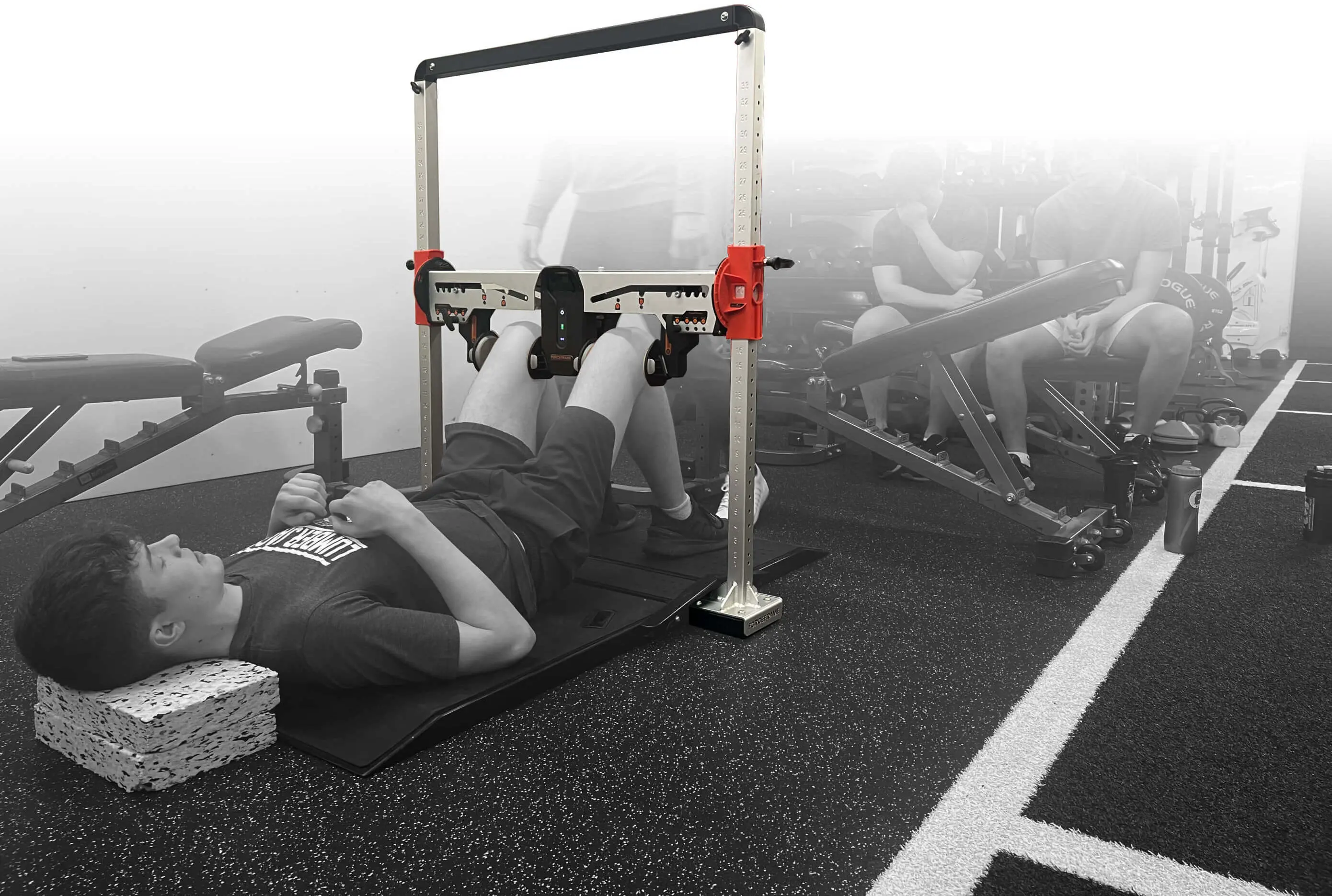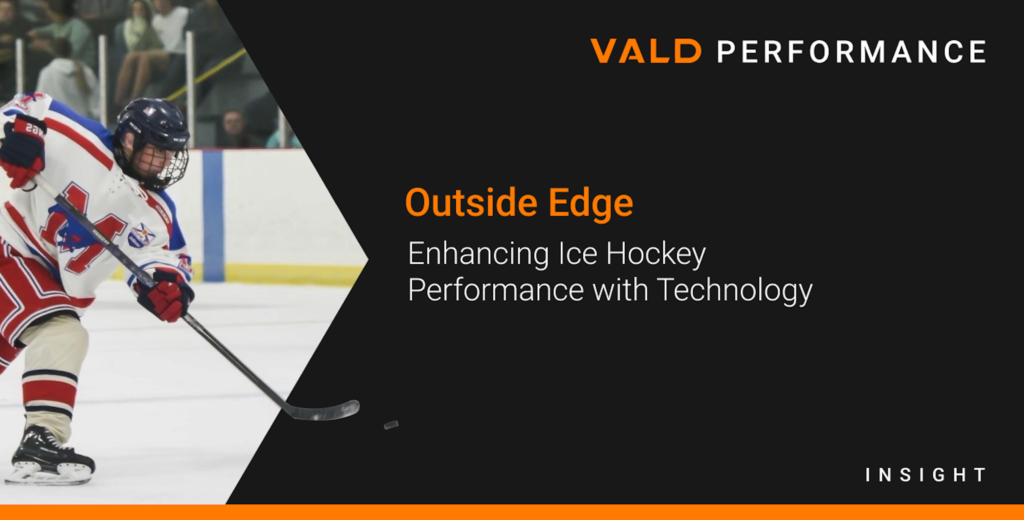Technology has revolutionized hockey training and performance analysis through advanced data collection and real-time feedback. Players and coaches now make informed decisions to enhance skills and strategies.
In recent years, technology has significantly impacted how hockey players train and improve their performance. Advanced tools like wearables, video analysis software, and smart sensors provide detailed insights into players’ movements, strengths, and weaknesses. Coaches use this data to create personalized training programs that target specific areas for improvement.
Real-time feedback allows players to make immediate adjustments, leading to more efficient practice sessions. This tech-driven approach not only boosts individual performance but also enhances team strategies, making the game more competitive and exciting. The integration of technology into hockey has undeniably set new standards in sports training and analysis.

Credit: www.amazon.com
Evolution Of Training Techniques
The landscape of hockey training has drastically evolved over the years. Traditional methods have made way for advanced technological solutions. This shift has significantly enhanced player performance and efficiency.
From Skating Rinks To Simulators
Training used to be confined to physical skating rinks. Players practiced drills and techniques on ice. Now, technology offers advanced simulators. These simulators mimic real-game scenarios. Players can improve skills without stepping on ice.
Simulators offer various benefits:
- Year-round training opportunities
- Reduced risk of injury
- Customizable training modules
These tools allow for precise skill development. Players can focus on specific areas needing improvement.
Impact Of Wearable Technology
Wearable technology has changed hockey training. It provides real-time data and feedback. This data helps in analyzing performance and physical condition.
Common wearables used in hockey include:
| Device | Function |
|---|---|
| Smartwatches | Track heart rate and calories burned |
| GPS Trackers | Monitor player speed and distance |
| Smart Clothing | Measure muscle activity and fatigue |
These devices offer numerous advantages:
- Improved injury prevention
- Enhanced performance analysis
- Personalized training plans
Wearable technology makes training more effective. Players can achieve their full potential.

Credit: valdperformance.com
Role Of Data Analytics
Data analytics has revolutionized hockey training and performance analysis. It provides detailed insights that help players and coaches improve their strategies. This technology tracks various performance metrics and predicts future trends. Let’s dive deeper into how data analytics is shaping hockey.
Performance Metrics
Performance metrics are crucial in understanding a player’s strengths and weaknesses. These metrics include:
- Skating speed
- Shot accuracy
- Pass completion rate
- Time on ice
Coaches use these metrics to create personalized training plans. For example, if a player has low shot accuracy, they can focus on shooting drills. Detailed metrics allow for targeted improvements.
Predictive Analysis
Predictive analysis uses historical data to forecast future performance. This helps in predicting injuries and planning game strategies.
Here are some examples:
| Metric | Prediction |
|---|---|
| Player Fatigue | Increased risk of injury |
| Team Performance | Game outcomes |
By analyzing past data, coaches can rest players who show signs of fatigue. This can prevent injuries and improve overall team performance.
Virtual Reality In Hockey
Technology has revolutionized hockey training and performance analysis. One of the most exciting advancements is Virtual Reality (VR). VR offers players unique ways to enhance their skills and experience the game. Below, we explore how VR is transforming hockey with immersive training environments and skill enhancement.
Immersive Training Environments
Virtual Reality creates immersive training environments for hockey players. These environments simulate real-game situations. Players can practice without being on the ice. This helps them understand game dynamics better.
These setups allow players to experience different game scenarios. They can practice power plays, penalty kills, and even game-winning shots. The immersive nature helps players feel like they are in an actual game.
Skill Enhancement
Virtual Reality is a powerful tool for skill enhancement in hockey. VR allows players to focus on specific skills. They can practice shooting, passing, and stickhandling in a controlled environment.
Benefits of VR for skill enhancement include:
- Immediate Feedback
- Customizable Drills
- Repetition without Physical Fatigue
Immediate feedback helps players correct mistakes in real-time. Customizable drills target each player’s weak points. Repetition in VR means players can practice without getting tired. This leads to faster skill development and better performance on the ice.
Wearable Devices
Wearable devices have revolutionized hockey training and performance analysis. These advanced technologies help players and coaches monitor health, track exertion, and improve performance. Let’s explore how wearable devices impact hockey.
Monitoring Player Health
Wearable devices can monitor a player’s heart rate, body temperature, and hydration levels. This data helps trainers spot potential health issues early. For instance, a sudden spike in heart rate can signal overexertion. Wearables also track sleep patterns, ensuring players get enough rest.
| Device Type | Health Metric | Usage |
|---|---|---|
| Heart Rate Monitor | Heart Rate | Prevents overexertion |
| Thermal Sensor | Body Temperature | Detects fever |
| Hydration Tracker | Hydration Level | Prevents dehydration |
Tracking Physical Exertion
Wearable devices measure physical exertion during training and games. They track metrics like speed, distance, and calories burned. This data helps coaches adjust training plans for optimal performance. For example, a player running too many sprints may need more rest.
- Speed Tracking: Shows how fast a player skates.
- Distance Tracking: Measures total distance covered in a game.
- Calorie Tracking: Counts calories burned during activity.
Collecting this data helps in customizing individual training programs. Players get personalized feedback, enhancing their development and reducing injury risk.
Ai And Machine Learning
Technology has greatly transformed hockey training and performance analysis. AI and Machine Learning have brought revolutionary changes. These technologies help teams train better and perform smarter. They analyze vast amounts of data swiftly, offering insights that were previously unimaginable.
Game Strategy Optimization
AI helps coaches develop better game strategies. By analyzing past game data, AI can predict opponents’ moves. This allows coaches to plan counter-strategies. Teams can adjust their play style in real-time. It ensures they stay ahead of their rivals. Players also benefit from personalized training plans. AI identifies strengths and weaknesses, guiding players to improve.
Below is a table that shows how AI optimizes game strategies:
| Aspect | AI Contribution |
|---|---|
| Opponent Analysis | Predicts opponents’ moves |
| Real-time Adjustments | Adapts strategies during the game |
| Player Improvement | Identifies areas for growth |
Talent Scouting
AI is revolutionizing talent scouting in hockey. Scouts use AI to find promising players. The technology analyzes player statistics and game footage. This helps in identifying hidden talents. AI can predict a player’s future performance. It reduces the risk of investing in the wrong players. Scouts can focus on high-potential candidates.
Here are some ways AI enhances talent scouting:
- Analyzes player stats for better predictions
- Reviews game footage to find hidden skills
- Reduces scouting time and effort
- Improves accuracy in talent identification
AI and Machine Learning are transforming hockey training and performance analysis. They offer insights that improve game strategies and talent scouting. This makes teams more competitive and players more skilled.
Video Analysis Tools
Technology has transformed hockey training and performance analysis. Video analysis tools play a crucial role in this evolution. These tools help coaches and players improve by providing detailed insights. Let’s explore how video analysis impacts hockey through various aspects.
Breaking Down Plays
Video analysis tools allow coaches to break down plays frame by frame. This helps in understanding the strengths and weaknesses of each play. Coaches can highlight specific moments for better learning. Players can see their positioning and decisions during the game.
These tools also help in analyzing the opponent’s strategies. Coaches can prepare their team by showing these breakdowns. This visual aid is more effective than verbal instructions alone.
Player Performance Reviews
With video analysis, player performance reviews have become more detailed. Coaches can review every player’s actions during the game. They can point out areas that need improvement with visual examples. Players can see their mistakes and understand how to correct them.
Video analysis also helps in tracking a player’s progress over time. Coaches can compare past and present performances to measure improvement. This motivates players to work harder and achieve their goals.
Benefits Of Video Analysis Tools
| Benefit | Description |
|---|---|
| Detailed Insights | Provides clear understanding of plays and performances. |
| Visual Learning | Helps players learn through visual examples. |
| Performance Tracking | Tracks player progress over time. |
| Strategy Analysis | Analyzes opponent strategies for better preparation. |
Mobile Apps And Software
Technology has transformed hockey training and performance analysis. Mobile apps and software play a big role. They help players improve and coaches make better decisions.
Training Programs
Mobile apps offer customized training programs for players. These programs include workouts, drills, and video tutorials. Players can follow these programs at their own pace.
Apps track progress and adjust training based on performance. This ensures players improve steadily. They also provide feedback and tips to enhance skills.
| App | Features |
|---|---|
| Hockey Tracker | Workouts, drills, progress tracking |
| Coach’s Eye | Video analysis, feedback, tutorials |
Player-coach Communication
Mobile apps improve communication between players and coaches. They allow instant messaging and video calls. Coaches can share feedback and instructions directly through the app.
Coaches can also send game plans and strategies to players. This ensures everyone is on the same page. Effective communication helps build a better team.
- Instant messaging
- Video calls
- Game plans
- Feedback sharing
Future Innovations
The world of hockey training and performance analysis is on the brink of a technological revolution. Emerging technologies promise to change how players train and compete. This section explores potential advancements and their long-term impact on hockey.
Potential Technological Advances
- Virtual Reality (VR): VR can simulate game scenarios, helping players improve decision-making.
- Wearable Tech: Smartwatches and sensors can track player vitals and performance metrics in real-time.
- AI and Machine Learning: AI can analyze vast amounts of data to offer insights and predictive analytics.
- Augmented Reality (AR): AR can enhance on-ice training by overlaying digital information in the player’s field of view.
Long-term Impact On The Sport
Future innovations will bring lasting changes to hockey. These technologies will not only help players but also coaches and analysts.
| Technology | Impact |
|---|---|
| VR Training | Players can practice complex scenarios safely. |
| Wearable Tech | Real-time data helps prevent injuries and optimize performance. |
| AI Analytics | AI can provide predictive insights, improving game strategies. |
| AR Enhancements | AR can offer instant feedback during training sessions. |
These advancements promise to make the game faster, safer, and more strategic. The integration of these technologies will redefine how hockey is played and enjoyed.

Credit: www.amazon.com
Frequently Asked Questions
How Does Technology Improve Hockey Training?
Technology improves hockey training by offering advanced tools like wearable sensors, video analysis software, and virtual reality simulations. These tools help players track performance metrics, analyze movements, and practice in realistic scenarios, ultimately enhancing skills and efficiency.
What Role Do Wearables Play In Hockey?
Wearables play a crucial role in hockey by monitoring players’ physical metrics. They track heart rate, speed, and movement patterns. This data helps coaches tailor training programs, prevent injuries, and optimize performance based on individual needs.
How Is Video Analysis Used In Hockey?
Video analysis in hockey allows coaches to review players’ techniques and game strategies. By breaking down footage, they can identify strengths and weaknesses, correct errors, and plan effective plays. This enhances both individual and team performance.
Can Virtual Reality Benefit Hockey Players?
Yes, virtual reality benefits hockey players by providing immersive training experiences. Players can practice game scenarios in a controlled environment, improving decision-making skills and reaction times. This technology offers a safe and effective way to enhance on-ice performance.
Conclusion
Technology has revolutionized hockey training and performance analysis. Players now have access to advanced tools and data. This leads to improved skills and strategies. Coaches can make informed decisions, enhancing team performance. Embracing these innovations ensures the sport’s growth and future success.
Keep an eye on these exciting developments in hockey.

